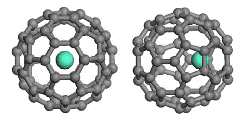Department of Chemistry
Date of this Version
August 2007
Abstract
We have computed the energies of adsorption of molecular hydrogen on a number of molecular linkers in metal–organic framework solid materials using density functional theory (DFT) and ab initio molecular orbital methods. We find that the hybrid B3LYP (Becke three-parameter Lee–Yang–Parr) DFT method gives a qualitatively incorrect prediction of the hydrogen binding with benzenoid molecular linkers. Both local-density approximation (LDA) and generalized gradient approximation (GGA) DFT methods are inaccurate in predicting the values of hydrogen binding energies, but can give a qualitatively correct prediction of the hydrogen binding. When compared to the more accurate binding- energy results based on the ab initio Møller–Plesset second-order perturbation (MP2) method, the LDA results may be viewed as an upper limit while the GGA results may be viewed as a lower limit. Since the MP2 calculation is impractical for realistic metal–organic framework systems, the combined LDA and GGA calculations provide a cost-effective way to assess the hydrogen binding capability of these systems.


Comments
Published in Journal Of Physics: Condensed Matter 19 (2007), 386220 (8 pp); doi:10.1088/0953- 8984/19/38/386220. Online at http://stacks.iop.org/JPhysCM/19/386220 Copyright © 2007 IOP Publishing Ltd. Used by permission.